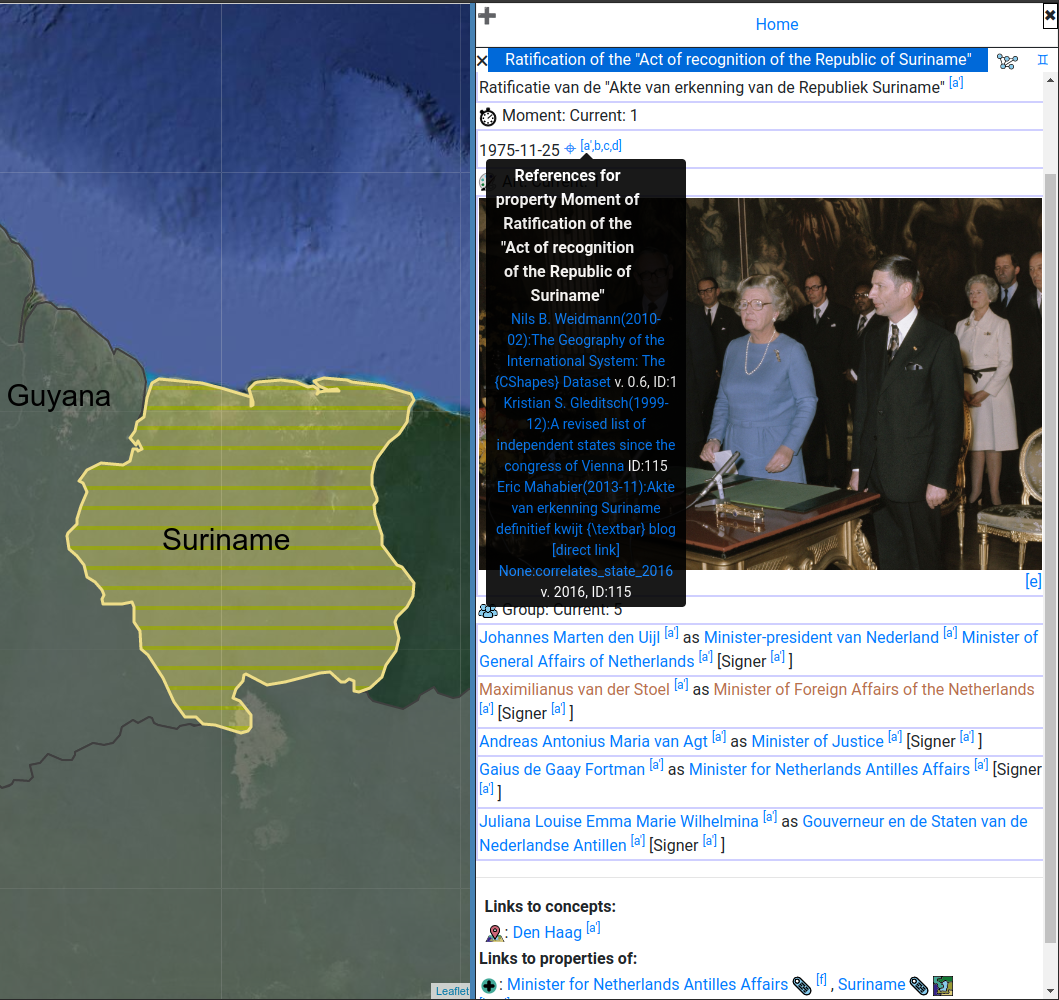 Rigorous sourcing
Rigorous sourcing
Citations and the sources they refer to - as well as a source's authors, editors, publishers, and more - are objects of their own right. The validity of sources can be critiqued within the same framework with the claims of the criticism requiring sources of their own.
That single, unified treatment of bibliographical and historical information allows for the visualization of claims, source disputes, meta analysis of the development of historical knowledge.
In the platform:
- Each value needs at least one citation for a source
- Values can be edited without citations, but they will not be shown on the platform until a source is given.
- Sources for locations and borders can be either textual descriptions or maps. There is a facility for Geo-referencing historical maps such that locations in different map projections can be used seamlessly.
- Different textual values in different languages are merely additional values for the same property of an object. For instance there may be multiple names in different languages defined for the same object. They have the same validity regardless of the language they are given in.
- Citations and the sources they refer to - as well as a source's authors, editors, publishers, and more - are objects of their own right. The veracity of sources can be critiqued within the same framework with the claims of the criticism requiring sources of their own.
- Properties and their values are linked to Citation objects that link to Source objects.
- Aggregated information will be displayed with weights for each value derived from source reliability according to:
- Source type (primary sources vs scholarly articles vs opinion pieces)
- Recorded disputes for the sources, their authors, or other related entities
Next
